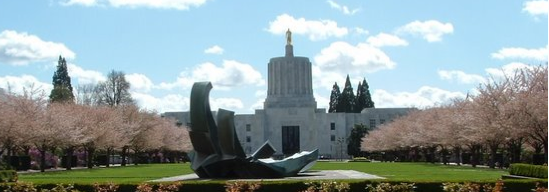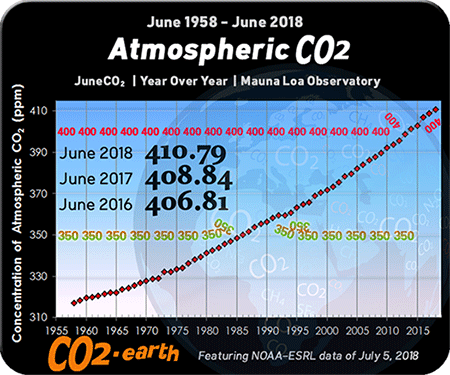

There was an excellent analysis of the flaws in the Columbia River "Megabridge" proposal in the Oregonian the other day. So much of it applies directly to the "Salem River Crossing" third bridge boondoggle -- only a difference of degree ($600+ million is the pre-overrun figure down here, rather than $4.2 billion up there). But even if you think $0.6 billion looks small compared to $4.2B, when you compare the size of the Salem area vs. Portland/Vancouver and the number of trips anticipated, our boondoggle seems to be even more of a boondoggle than their record-setting boondoggle. Some key points:
We're all smarting from the economic recession that's hurt our incomes and job prospects, from the decline in housing values that's dented our wealth, and the collapse in financial markets that's dealt a big setback to our retirement plans. We're smarting, but, we tell ourselves, we're smarter, too.One of the key issues is highlighted above: the circular nature of the traffic projections. The planners presume that we're going to keep on driving more and more every year, in more and more cars, despite the fact that vehicle-miles-traveled has been falling for the past few years. Even more important, the state has made a commitment to reduce greenhouse gas emissions by 80% in just 40 years -- that means that not only can vehicle emissions not increase, they must keep declining from here on out. That means that the existing bridges are more than adequate into the future.
We've learned key lessons. We won't be fooled by the Bernie Madoffs, or by claims that house prices can only go up, or that some form of complex mortgage-backed security can eliminate financial risk, or that stated-income "liar loans" were ever a good idea. At a high price, we've bought ourselves some very valuable lessons.
Next time, we tell ourselves, we'll be smarter. We'll ask the hard questions -- before we sign on the dotted line. We won't be conned by overly optimistic estimates or take some self-interested experts' assurances at face value.
But are we really smarter? . . . [L]ike frenzied homebuyers a few years back, many bridge advocates seem chiefly concerned with superficial questions, such as whether the bridge will be pretty. Before we sign on the dotted line, we ought to be asking the kind of questions that will keep us from repeating the worst mistakes of those caught up in the housing bubble.
First and foremost, who will pay for this bridge? Project proponents have vaguely promised that funding will come from a mix of federal and state sources, but there is little indication of any of this will materialize. . . .
In the height of the housing boom, lots of buyers rationalized mortgages they couldn't afford for houses bigger than they needed based on the belief that housing prices could only go up.
Highway advocates have a similar delusion -- that traffic levels can only increase. But that's not true. Driving has been going down in Portland, a trend that started even before the run-up in gas prices and the recession. Traffic counts have been going down on the Interstate bridges for the past three years. And according to Inrix, the nation's leading providing of real-time traffic information, afternoon peak-hour congestion on I-5 northbound has declined more than 10 percent in the past year. If traffic levels flat-line, or grow much more slowly than in the past -- as now seems certain to be the case, thanks to higher gas prices -- we simply don't need 12 lanes of capacity, plus light rail.
Projections of continually increasing traffic are not simply a justification for a bigger bridge, they are essential to paying for it. Because any new bridge will require tolls, the amount of toll revenue hinges directly on the number of people who cross the bridge. If fewer people use the bridge than predicted, then the bridge will need a bailout.
Not only are toll revenue forecasts notoriously over-optimistic -- like rating agency estimates of likely default rates on subprime loans--but across the country, toll revenues are declining in the face of the recession and changing driving habits. . . .
If we've learned any hard lessons from the past year about borrowing money, now is the time to put that learning to work. We need to demand a financial plan for the CRC that spells out who pays, and how much. We need independent accurate estimates -- based on a world of $3 or $4 per gallon gas, global warming, and declining vehicle travel --and of how much traffic will use the bridge, especially with a toll . . . .
And we should really ask whether, if we really have $4 billion to spend on the region's transportation infrastructure, we ought to spend so much of it in one place, to facilitate more peak-hour commuting and suburban sprawl. . . .
The work of the project's consultants is too reminiscent of the glossy real estate brochure providing only the most cursory examination of these risks, making implausibly optimistic assumptions, and doing nothing to quantify the consequences of error. The region's elected officials and citizens should insist on real due diligence on these risks -- preferably from parties completely independent of the project -- before mortgaging our region's future for a bridge we don't need and can't afford.
Moreover, the restored Union Street RR bridge has been prepared for emergency vehicles, so even if something happens to block one of the bridges (Center St or Marion St), police, fire, and ambulances can all use the Union Street bridge. That eliminates the claim that we have to build a new bridge in case someone stops traffic for a few hours by threatening to jump off one of the bridges.
There is no problem with any bridge capacity that reversing the share of single-occupant vehicles and carpool vehicles in the commuting profile won't cure, for about a savings of $599 million.

![Reblog this post [with Zemanta]](http://img.zemanta.com/reblog_e.png?x-id=821daeaa-6735-4430-9995-04f2bc59a9cd)




No comments:
Post a Comment